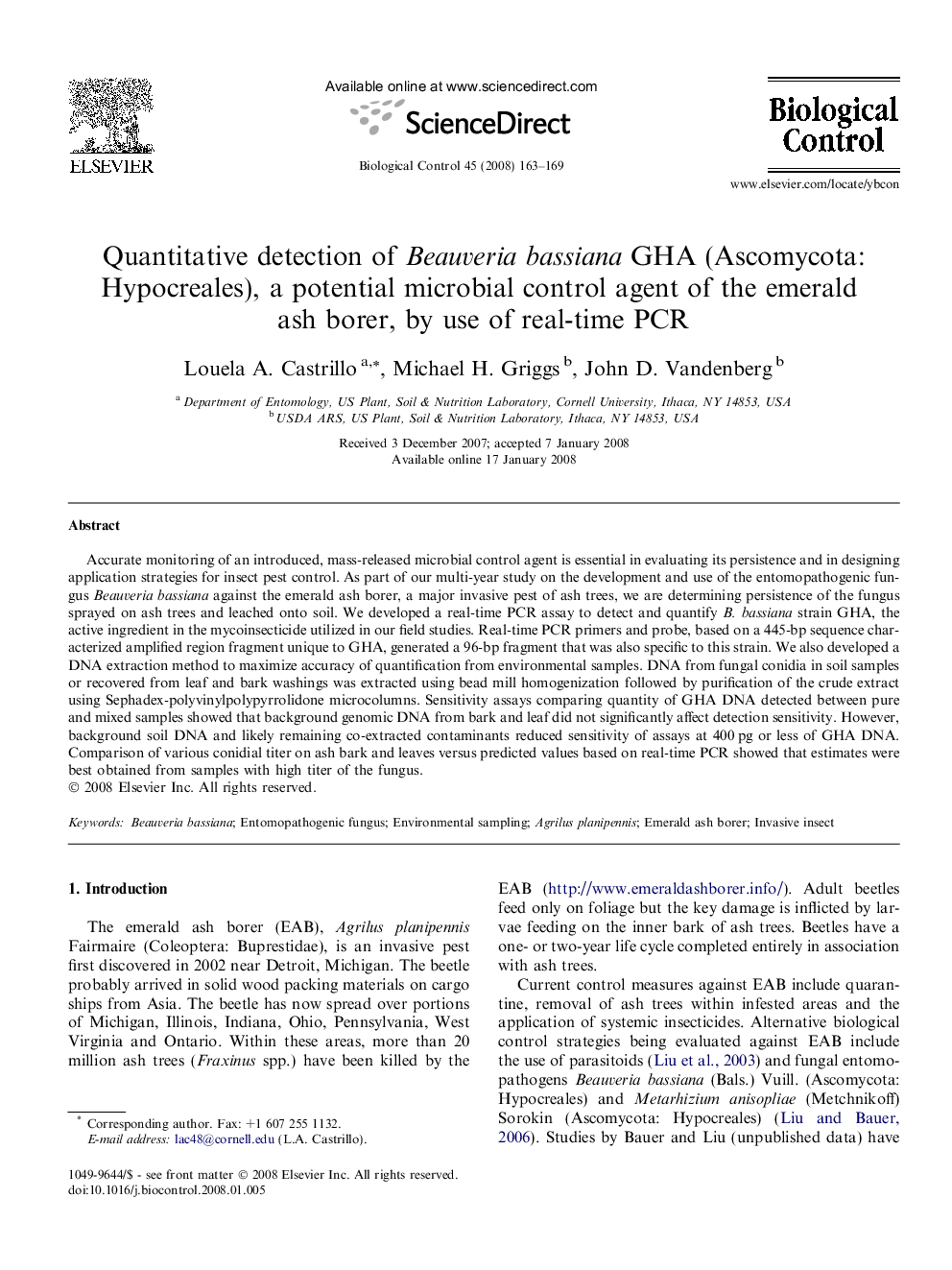| Article ID | Journal | Published Year | Pages | File Type |
|---|---|---|---|---|
| 4504928 | Biological Control | 2008 | 7 Pages |
Accurate monitoring of an introduced, mass-released microbial control agent is essential in evaluating its persistence and in designing application strategies for insect pest control. As part of our multi-year study on the development and use of the entomopathogenic fungus Beauveria bassiana against the emerald ash borer, a major invasive pest of ash trees, we are determining persistence of the fungus sprayed on ash trees and leached onto soil. We developed a real-time PCR assay to detect and quantify B. bassiana strain GHA, the active ingredient in the mycoinsecticide utilized in our field studies. Real-time PCR primers and probe, based on a 445-bp sequence characterized amplified region fragment unique to GHA, generated a 96-bp fragment that was also specific to this strain. We also developed a DNA extraction method to maximize accuracy of quantification from environmental samples. DNA from fungal conidia in soil samples or recovered from leaf and bark washings was extracted using bead mill homogenization followed by purification of the crude extract using Sephadex-polyvinylpolypyrrolidone microcolumns. Sensitivity assays comparing quantity of GHA DNA detected between pure and mixed samples showed that background genomic DNA from bark and leaf did not significantly affect detection sensitivity. However, background soil DNA and likely remaining co-extracted contaminants reduced sensitivity of assays at 400 pg or less of GHA DNA. Comparison of various conidial titer on ash bark and leaves versus predicted values based on real-time PCR showed that estimates were best obtained from samples with high titer of the fungus.
